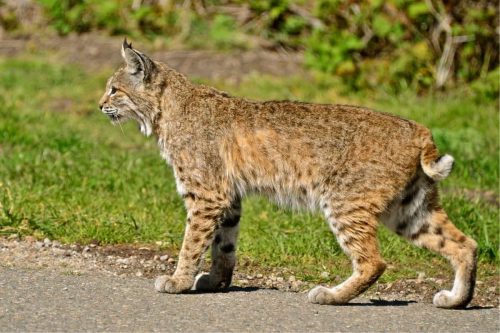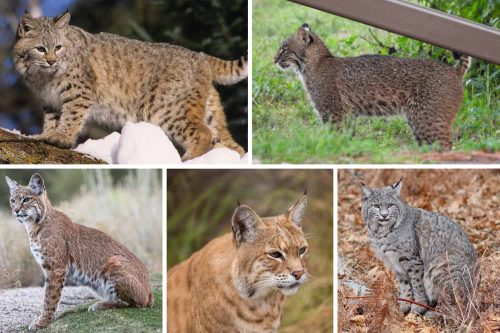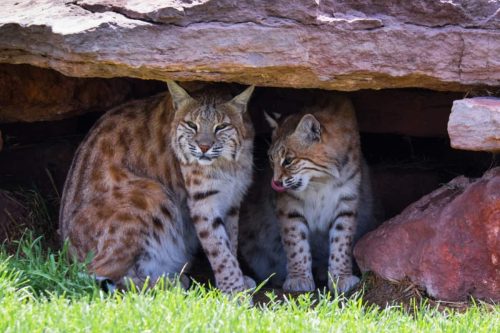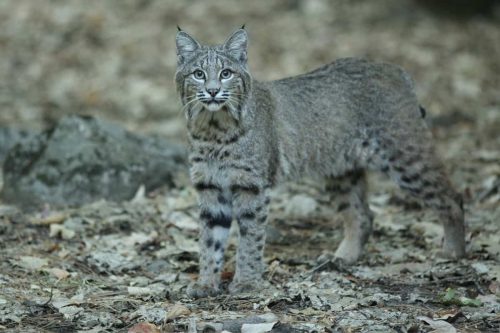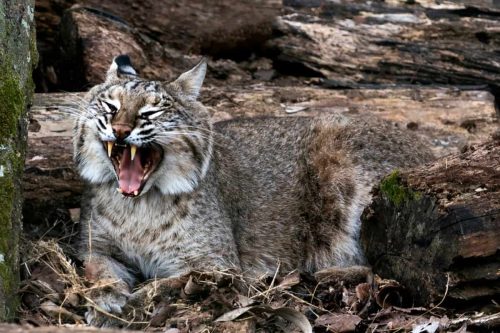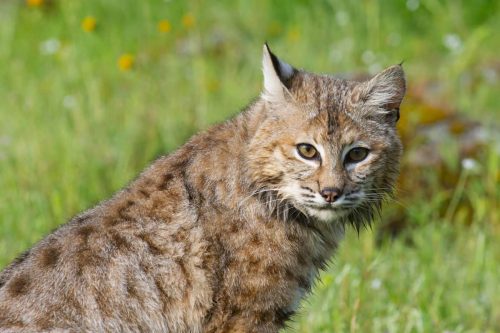What do bobcats look like: Understanding the Anatomy of Bobcats
Many people are often confused by the general appearance of bobcats. Most of the time, they intermix them with the house cats or other Lynx species. However, there are certain differences exist between bobcats and other species. This confusion also happens due to the weird nature of bobcat hunting as they come out at both dawn and dusk for this purpose.
People can rarely see these animals in the wilderness due to their secretive nature. In this article, we are going to explain in detail the general appearance of bobcats. By going through this article, you can easily find the answer to your question what does a bobcat look like?
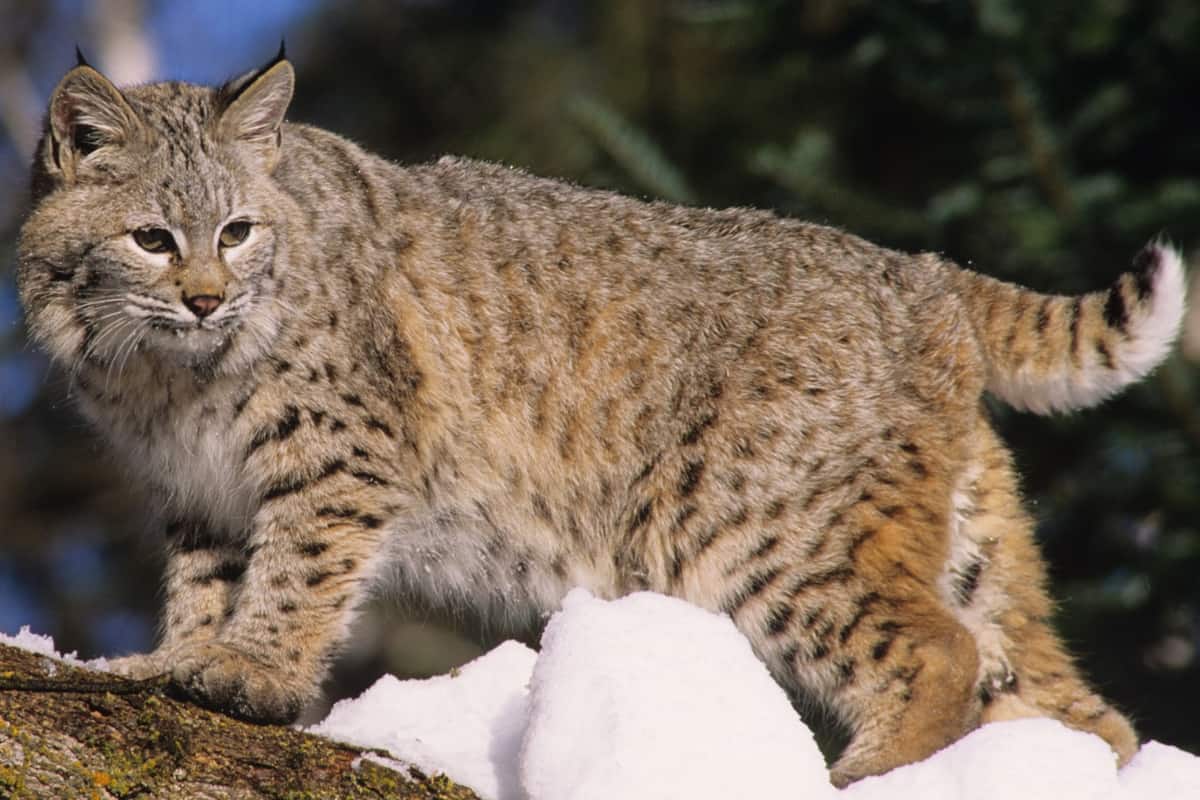
Contents
What do bobcats look like?
Let’s have a look at the general appearance of bobcats. Bobcats are medium-sized wild cat species. They are mainly found in the North American region. The coat color of the bobcat is actually a mixture of many colors like reddish brown, yellowish brown, buff-brown, and some shades of light gray.
You will see a very complex spotted pattern on their body. You can observe both Albinistic and Melanistic type bobcats in the North American region. However, the Melanistic mainly reside in Florida. You can easily differentiate bobcats from domestic cats by noticing the ruff of fur around the side face of bobcats.
However, this kind of ruff fur you might also find in other Lynx species but the tail of all the Lynx species is fully black in color or seem like it is dipped in ink well but the tail of the bobcat just has the tip of black color at the top while it is white from the bottom.
As far as the overall size of the bobcat is concerned, it is 21 inches in height, on average weight around 30 pounds, and almost 45 inches long. Bobcats, who reside on the Northern side, are a little bit larger in size as compared to bobcats who reside on the southern side of the continent.
How to identify a bobcat
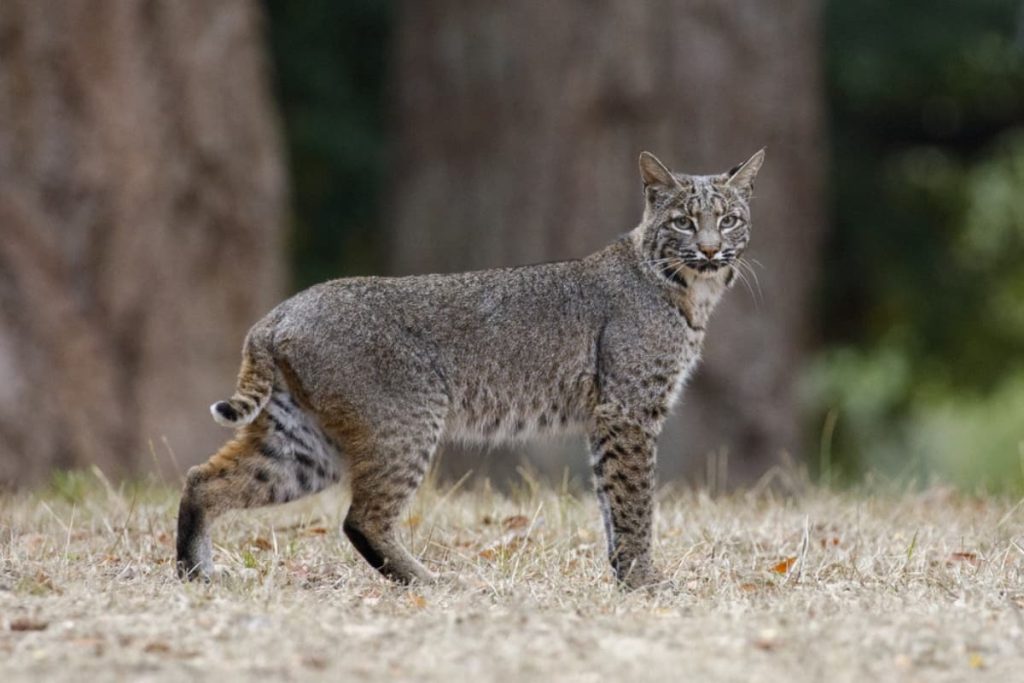
It is extremely difficult to identify a bobcat as these animals have a very secretive nature and they only come out for hunting in the early dawn and dusk. Most of the damage done by these animals is misattributed to other animals like coyotes. However, certain things are greatly helpful in the identification of a bobcat’s presence somewhere.
The track of the bobcat is highly helpful in this regard as the bobcats come with broad and large paws as well as retractable claws which are altogether different from the narrow and more canine-like track of coyotes and small paws of house cats.
What is the common color pattern of the bobcat?
Bobcats’ color pattern varies from one region to another and from one habitat to another. Most of the time, you will see a bobcat with reddish or dark brown color fur along with some dark spots and stripes. You might also notice some light-gray color patterns on their coat.
However, all the bobcats come with white underbelly color. Some people have also reported fully black color bobcats. But these are mainly rumors as you cannot prove these kinds of things with videos or photos. Bobcats also come with very unique tuft ears which have a black tip on their top. You will also notice a black tip at the end bobcat’s tail.
What do baby bobcats look like?
Baby bobcats are almost the same size as the kitten of normal house cats. However, there are some distinguishable features like dark spots and black color stripes on their body. Baby bobcats are named kittens. On average, they produce 4 kittens at a time. It could also increase to 6 at a time. At the time of birth, these kittens exhibit light-colored or blue-colored eyes. After some days, the color eyes turned yellowish color with black pupils around their eyes.
Bobcats comparison with animals having a similar appearance like bobcats
Some animals show a lot of resemblance with bobcats. At an early age, animals like cougars and coyotes are mistakenly taken as bobcats. But these animals grow into altogether different shapes and sizes as compared to bobcats. Let’s compare bobcats with these animals.
Bobcat vs Lynx species
Bobcats show a lot of similarities with other lynx species like Canadian, Eurasian, and Iberian Lynx species. These Lynx species like bobcat also comes with tufts ear, facial ruffs, and very short tail. The tail of the bobcat is slightly larger than the tail of these species. But bobcats are slightly smaller than these species size-wise.
Bobcats mainly like to reside in lower latitudes and warmer climates while Lynx species upper Northern latitudes and cold climates. These Lynx species have to face a lot of snow and temperature could drop as low as -70 degrees Fahrenheit. These cats are fully adaptable to these kinds of environments as their footpads are fully covered with very dense cover of fur while bobcats have bare footpads.
These cats also come with long legs as compared to bobcats. When it comes to its coat color, these lynx species have plain but brown-gray color coats which act as camouflage in swamps areas and coniferous forests. By having this color, they can stalk their main prey named snowshoe hare.
On the other hand, bobcats have brown color coats with a lot of black spots. It blends with dense vegetation cover, brush, and rocks. By this blending, they can easily hunt their main prey named cotton tail rabbits.
Bobcats vs coyotes
Bobcats share their habitat with coyotes in most regions of the world. By appearance, they look alike but bobcats are almost the size of coyotes. Moreover, bobcats are also very secretive and stealthy by nature but coyotes don’t act like that. Bobcats have retractable claws while coyotes have permanent type claws. That’s why several times people blamed coyotes for their loss which was actually done by the bobcats. They might look the same in the face but they don’t have any similarities.
Bobcats vs cougars
Cougars are also sometimes mistaken as bobcats due to similarities in their face. But there are many differences between them. For instance, cougars are very large animals and almost five times heavier than bobcats. Cougars can run at the speed of 50 MPH on average while bobcats can only run at the maximum speed of 25 MPH. Bobcats are also similar to cougars in terms of their color patterns.
Bobcats ears
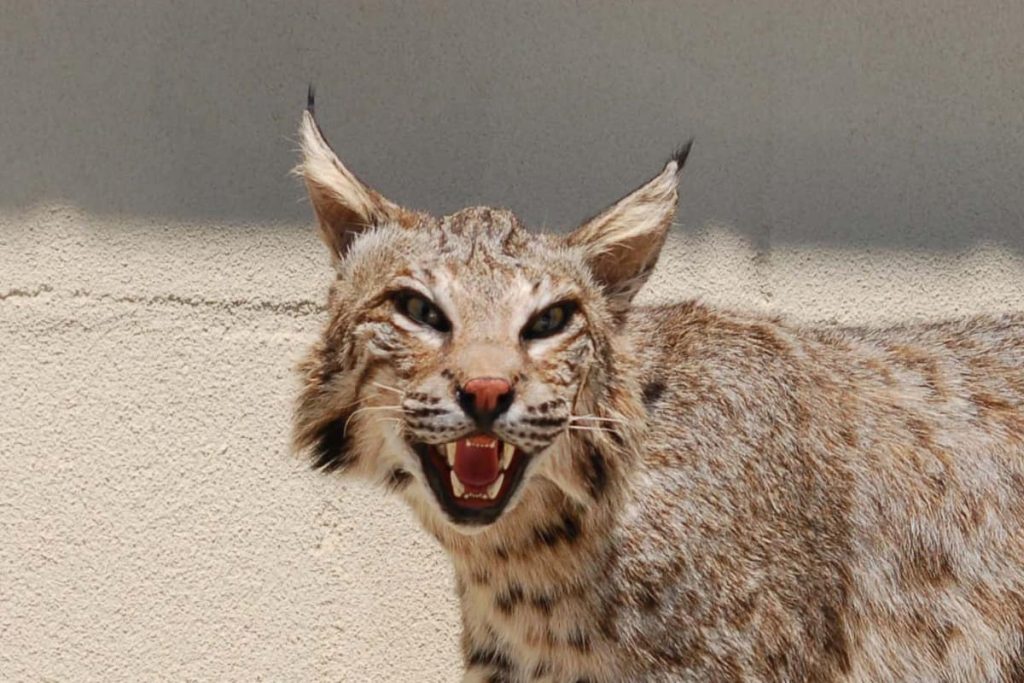
Bobcats are also very well known for their tuft ears. These tuft ears improve the overall hearing capability of bobcats. However, bobcat ears from behind have been marked with two special white spots. These white spots are highly helpful for kittens as they can follow this dim light while following their mother or father. Other Lynx species like Iberian, Eurasian, and Canadian lynx have slightly larger tuft ears as compared to bobcats.
What does bobcat hair look like?
The haircut of the bobcat is a twist on the wolf cut. The haircut has a lot of shaggy layers. They have very short brown fur on their coat having many black markings or spots. These markings are specially named bobcat markings. The underside of the fur is light white.
Frequently asked questions
Conclusion
Many people are confused about the facial and physical appearance of bobcats. They intermix them with other species like Canadian Lynx, Eurasian Lynx, domestic cats, cougars, and coyotes. We have explained in detail the overall appearance of a bobcat. We have also compared the face and sizes of bobcats with the above-mentioned animals.
By making this comparison, we have highlighted all the differences which exist between bobcats and these animals. By overviewing this comprehensive article, you can clear all your confusion about the appearance of bobcats.

Izzy is an experienced ranch worker who has a passion for exploring nature and getting up close to wildlife. With her connections to various animal organizations, Izzy is well-versed in animal care and rehabilitation.

